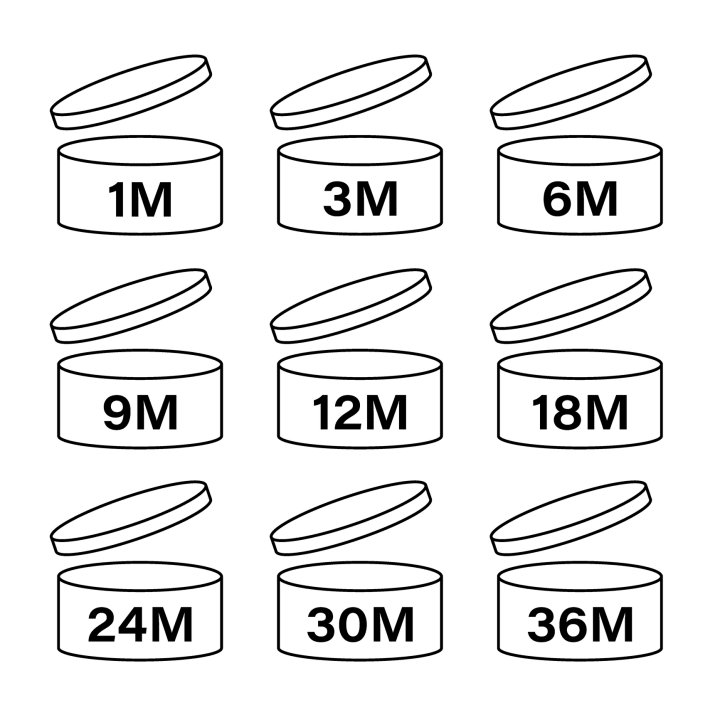A New Reality Show Is Looking to Find America’s Next Great Author
Excluding all the reality stars who’ve gone on to publish books, there’s not a ton of crossover between writers and reality TV. But that’s about to change.
As The Guardian reports, an upcoming program called America’s Next Great Author is looking to find exactly what it sounds like it’s looking to find: America’s next great author. The show will kick off with a nationwide tour of cities, where prospective contestants will each pitch their book proposal to a panel of judges in one minute or less. Six people will then be chosen to attend a month-long writer’s retreat filled with “live-wire challenges and spectacular storytelling,” according to the website.
All they’ll have at the beginning of the retreat is the idea for their book; by the end of it, they must have written the whole book. If that seems like a high-stakes, high-pressure environment, that’s sort of the point. The site describes the program as “geared toward anyone who loves drama on and off the page.”
But you don’t need to have an MFA or a previous book deal under your belt in order to toss your hat in the ring. In fact, producers might prefer that you didn’t. “America’s Next Great Author is dedicated to including writers who aren’t normally given a seat at the table in mainstream publishing,” the site explains.
Bestselling author Kwame Alexander—winner of the 2015 Newbery Medal for his middle-grade novel The Crossover—will host the series. It also boasts an impressive slate of judges, including children’s author Jason Reynolds, broadcast journalist Angie Goff, and playwright Marga Gomez.
America’s Next Great Author is currently looking for possible contestants to feature in its pilot episode, filming on October 30, 2022. To find out how to participate, you can sign up to receive details about casting calls through the website.
4 Signs That Your Favorite Makeup and Skincare Products Have Gone Bad, According to Beauty Experts
Raise your hand if you’ve been using the same mascara for the last several years. While you might think your favorite lash enhancer is still safe to use—especially if you’ve only applied it a few times since March 2020—the truth is, once you open most beauty and skincare products, the clock starts ticking. Even infrequently used foundations, moisturizers, and eye makeup that you thought could last forever can (and eventually will) expire.
In some cases, cosmetics might even go bad before the expiration date that you see on the packaging. According to Dr. Rosmy Barrios, MD, head of the anti-aging department at IM Clinic and a medical content author at Health Reporter, the reason for this is contact with air. “The longer [a product’s been] opened, the more it oxidizes and breaks down,” she tells Mental Floss.
That means that the longer you have a particular item, the more important it is to pay attention to any physical changes you might notice. If you don’t, experts say your skin will likely pay for it later. “Using expired makeup or skincare products could cause breakouts, irritation, and allergies,” says Laura Roncagli, a professional makeup artist and co-founder of the Italian beauty publication MyBeautik. It could also lead to dryness, rashes, and even skin infections.
Concerned you may be in need of a cosmetic clean-out? Here are four tell-tale signs that it’s time to replace your old makeup and skincare.
1. It’s past the expiration date.
The most immediate sign is, of course, if you’ve passed the recommended timeline stamped on the side of your product. It usually appears in the form of a number and the letter M (which stands for months) inside the shape of a jar. Known as the Period-After-Opening (PAO) symbol, it indicates roughly how long you can safely use an item once it’s been opened.
These “best by” timelines vary by product type, but all cosmetics will inevitably reach their limit. According to Dr. Barrios, sunscreens and fragrances typically last the longest, sometimes even up to three years. Eyeshadow palettes have an equally long shelf life, but should be discarded after two to three years. “Otherwise, they can cause eye inflammation or cover eyelids unevenly,” she says.
When it comes to skin creams, primers, and foundations, experts say they’re generally good for about a year, but mascaras should be replaced every couple of months. These timelines can be affected by a number of things, however, including how the product was stored, its ingredients—for example, do they have preservatives or are they all-natural?—and/or how quickly they may rack up bacteria, based on where they’re used or how they’re applied. (Makeup brushes in particular are notorious havens for bacteria; a recent study found that they’re dirtier than most average toilet seats, despite being easy to clean.)
Expiration dates are important, but they’re not the be-all, end-all, either: “In many cases, [products] are safe to use if the date has passed, but it is still not recommended to take risks,” Dr. Barios says. And as mentioned before, it’s possible that mascara or cream you just added to your vanity may not make it to its recommended replacement date, based on other environmental factors. It’s kind of like a grocery store’s sell-by date: The food may still be fit for consumption once it passes, but it could be on the edge of rancid, too—and sometimes, you don’t realize until you get home that it’s actually moldy.
If you’re stressing over how to keep track of it all, Roncagli suggests creating a spreadsheet, including when each item was bought and opened, and when it should (ideally) be replaced. “Having a lot of products makes it hard to tell which ones are about to expire, so having a little list to check every once in a while will make it easier for you,” she says.
2. The consistency has changed.
If your product starts to dry out or seems watered down, becomes sticky or chalky, or if the different ingredients start to visibly separate, those are all sure-fire signs that it’s time to replace it.
“For example, liquid foundations tend to become thicker, to the point where [they] clump,” Roncagli says. “Drying is also pretty common for products like mascara and liquid eyeliners.”
3. It’s discolored.
“Much like the subtle changes you look for in a fruit or vegetable that’s going bad, any signs of discoloration or changes in smell or texture are tells that your [products] need to be replaced,” says Rachel Roff, a licensed aesthetician and founder and CEO of Urban Skin Rx.
While this probably seems obvious for something where the color is imperative, like your eyeshadow or eyeliner, it could be more difficult to pick up on with certain skincare products, like a moisturizer or priming serum. You may not even take notice of it if that particular item dispenses a small amount out of a pump, or if you’re scooping a substance into your hands and then rubbing it right into your face.
For that reason, it’s important to take a moment to observe whatever you’re about to apply before you do so. If your white cream has suddenly taken on a yellowish hue, or if your pink serum is starting to look a little brown, it’s probably time to give it the heave-ho.
4. It smells funny.
A fragrant product may naturally start to lose some of its potency as it ages, but if something scentless starts to smell—or worse, if a scented product gives off a funky odor instead of its usual aroma—it’s better to be safe than sorry. Toss it.
Understandably, you may not want to lose out on something you spent a lot of money on, or let it all go to waste if the container isn’t empty. If you have beauty products that you know you won’t get through before the expiration date, consider divvying them up into smaller, airtight containers like these Cadence capsules (or this $6 set from Amazon) to keep them fresher for longer. But if anything from your makeup or skincare stash looks (or smells) different from when you bought it at any time, remember that the best thing to do is probably to replace it.





![Stylish Girl Pic For Dp Images [ Download ]](https://blogger.googleusercontent.com/img/b/R29vZ2xl/AVvXsEgqaAucVFaSGiu8Eod9dg8dqdCEupCmNINTos4rKQX16jJOKFuNr2Vfn3h66JmaPyiPUt6IQSear7yM-c_JjHaP1OkbVQsl_Ier-1LqnUu3NqIy1fDTUvXEX3i9Nj4bM5oiw9MX6oRikQZt/w74-h74-p-k-no-nu/Stylish-Girl-Pic-for-Dp+%25281%2529.jpg)

